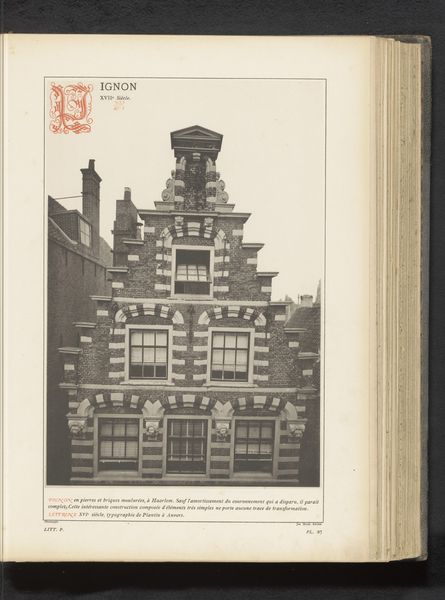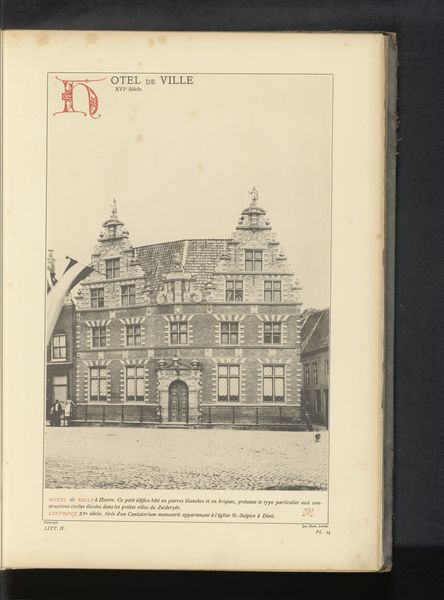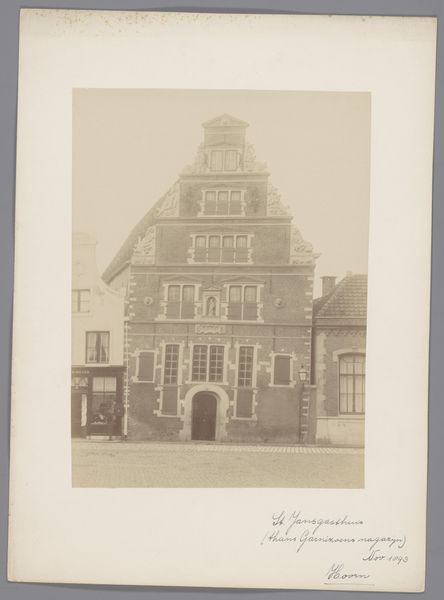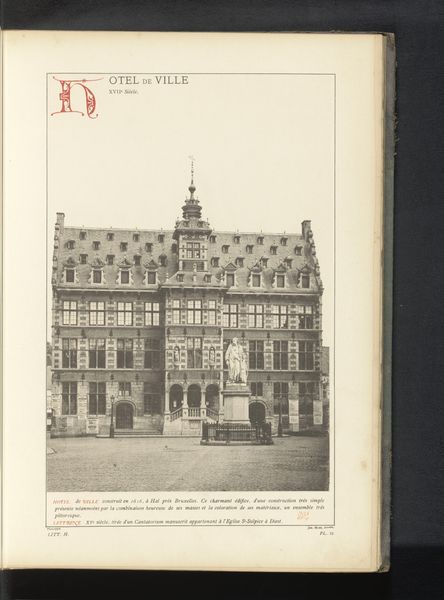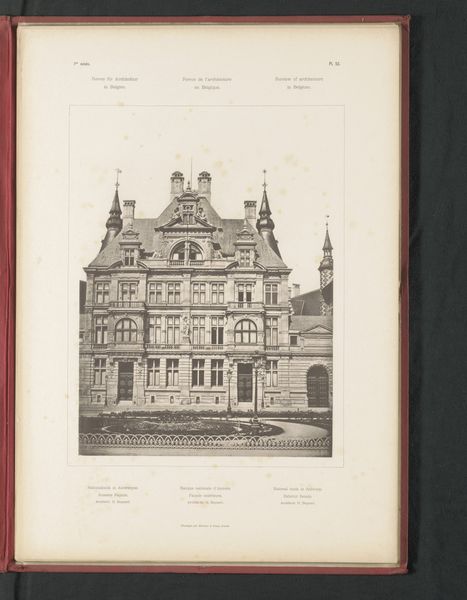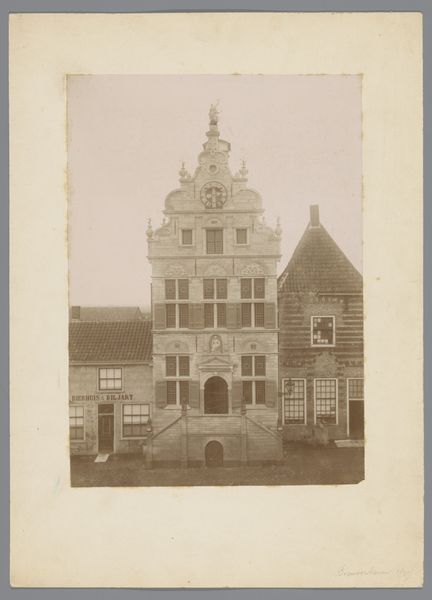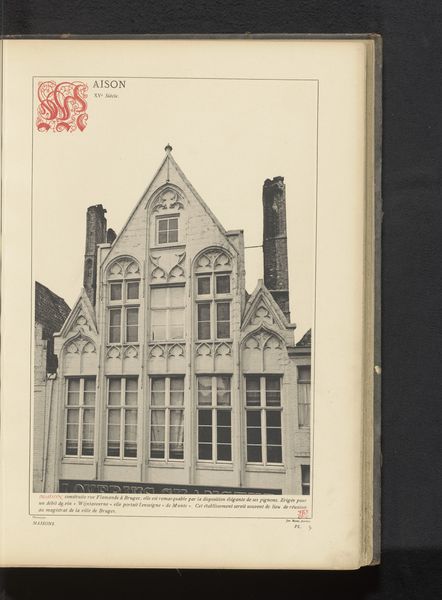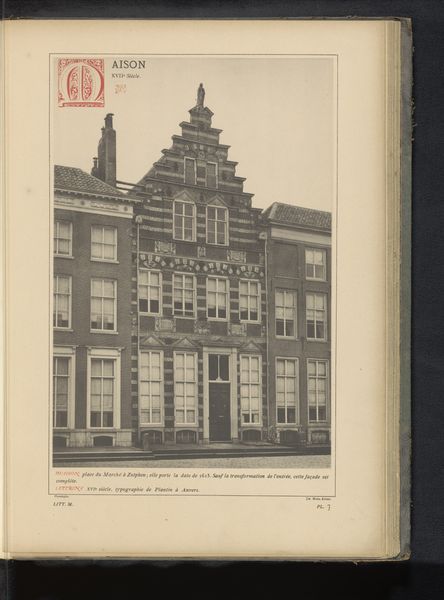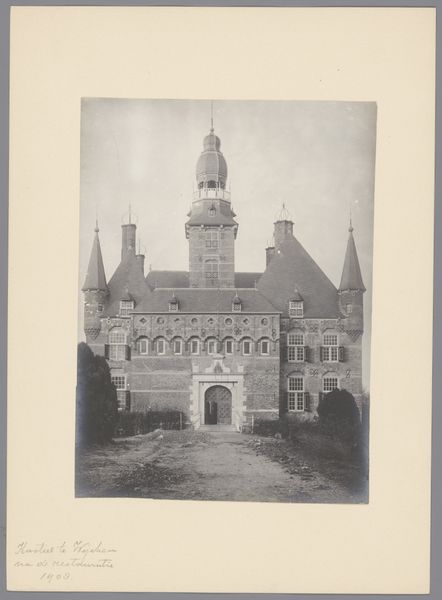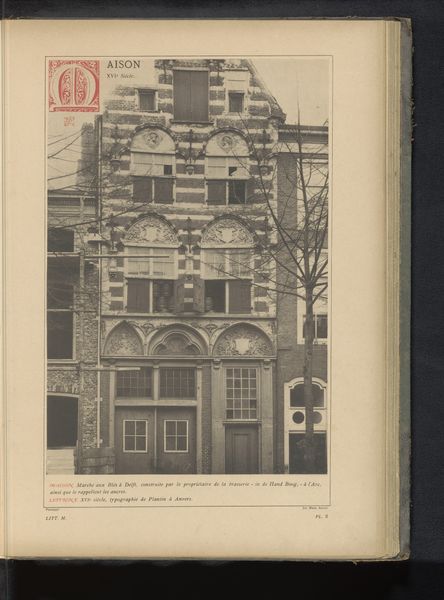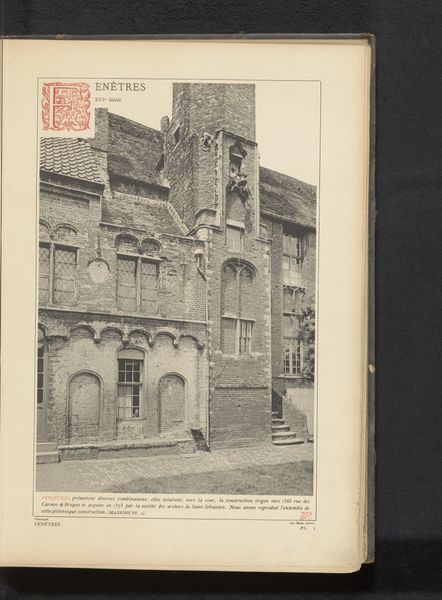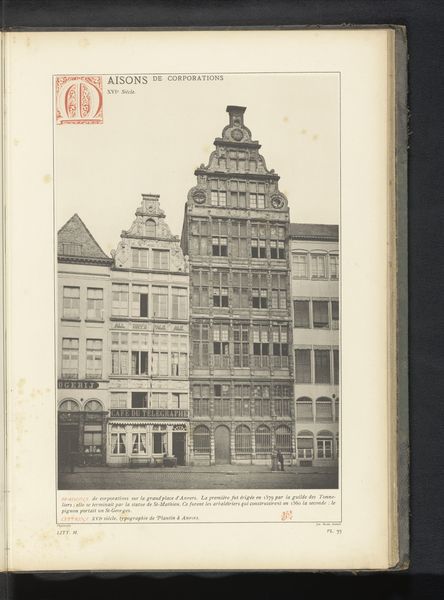
print, photography, site-specific, architecture
#
dutch-golden-age
# print
#
photography
#
site-specific
#
cityscape
#
architecture
Dimensions: height 337 mm, width 231 mm
Copyright: Rijks Museum: Open Domain
Curator: Here we have an image of the Sint Jansgasthuis in Hoorn, presented through a photographic print from before 1880. What are your first thoughts? Editor: My first thought is about the sheer solidity of the building. You can feel the weight of the materials—the bricks, the stonework—in the careful construction. The structure looks monumental, designed to endure. Curator: Indeed, it's worth noting that "gasthuis" translates to "guest house" or "hospice," serving as a place for travelers and the vulnerable. The photograph, although presented as a historical document, tells a story beyond the mere structure. Consider the socio-economic landscape that necessitated such institutions, providing sanctuary and aid to those in need. Editor: Absolutely. And how those societal structures shaped the built environment. The high-quality materials used here suggest a substantial investment. I wonder who commissioned its construction, what the working conditions were like for the laborers, and what types of tools they employed to construct such a complex facade? These are important points to understanding the value we assign to art and how that definition relates to material resources and accessibility to the general populace. Curator: We can analyze it in a sociopolitical context as well: Was access equitable, regardless of race or gender? The positioning of this building as a centerpiece implies power and visibility. What does it suggest about who has a right to be represented in a historical visual record? The architecture whispers stories of who had a place, who didn't, and who was being actively excluded. Editor: I'd like to add to that. If we examine it as a commodity in the Victorian age, the labor and resources needed to create this photography are just as interesting as the story the work represents. Curator: By analyzing its creation and history through this multifaceted lens, we reveal a lot about social hierarchies and cultural narratives, expanding it from just an image of a building. Editor: This has encouraged me to delve more deeply into the origins of each brick and its cultural value.
Comments
No comments
Be the first to comment and join the conversation on the ultimate creative platform.
